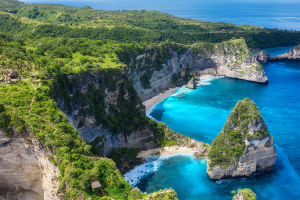The Lut Desert, also known as Dasht-e Lut, is a vast desert. It is one of the hottest and driest places on Earth, with temperatures reaching up to 70°C (158°F) during the day and dropping to -30°C (-22°F) at night.
The desert covers an area of approximately 51,800 square kilometers and is considered one of the most unique natural wonders in the world.
The Lut Desert is a relatively new addition to the UNESCO World Heritage List, having been added in 2016. This recognition has drawn attention to the unique geological formations and ecosystems found within the desert. The landscape of the Lut Desert is dominated by sand and rocks, with occasional salt flats and dry riverbeds.
The landscape is often described as otherworldly, with towering sand dunes that can reach up to 300 meters in height, salt flats that stretch as far as the eye can see, and rock formations that have been shaped by wind and water over millions of years.
One of the most remarkable features of the Lut Desert is the Kalut (locally known as "yardangs"). These are massive formations of rock and sand that have been sculpted by the wind into jagged ridges and spires.
The Kalut covers an area of approximately 1,700 square kilometers and is considered one of the most significant examples of wind erosion in the world. These formations can reach up to 200 meters in height and are a popular destination for tourists and adventurers.
The Lut Desert is also home to a diverse range of plant and animal life, despite the harsh conditions. Many of the plant species found in the desert are adapted to the arid climate, with long taproots that allow them to access water deep below the surface.
Animal species found in the Lut Desert include the Asiatic cheetah, and the sand fox, as well as a variety of reptiles and insects.
Despite its unique beauty and ecological significance, the Lut Desert is also a challenging place to live for the local communities. The lack of water and extreme temperatures make it difficult to sustain agriculture or settlement. However, some nomadic communities have lived in the desert for generations, relying on traditional practices such as camel herding and salt collection.
The Lut Desert has also become a popular destination for adventurers and tourists seeking a unique and challenging experience. Many people come to the desert to hike, camp, and explore the stunning natural landscapes. However, visitors are advised to take precautions due to the extreme temperatures and lack of infrastructure in the area.
In recent years, the Lut Desert has become a focal point for scientific research due to its unique geological formations and extreme conditions. Scientists have studied the desert to learn more about the history of the Earth's climate, as well as to investigate the potential for life on other planets.
In 2004, a team of researchers discovered a previously unknown type of meteorite in the Lut Desert, which provided new insights into the formation of our solar system.
The Lut Desert is a remarkable natural wonder that is unlike any other place on Earth. Its unique geological formations, extreme temperatures, and diverse plant and animal life make it a fascinating destination for scientists, adventurers, and tourists alike.
As more people learn about the ecological significance and beauty of the Lut Desert, it is likely to become an increasingly popular destination for those seeking an unforgettable experience in one of the most challenging environments on the planet.


